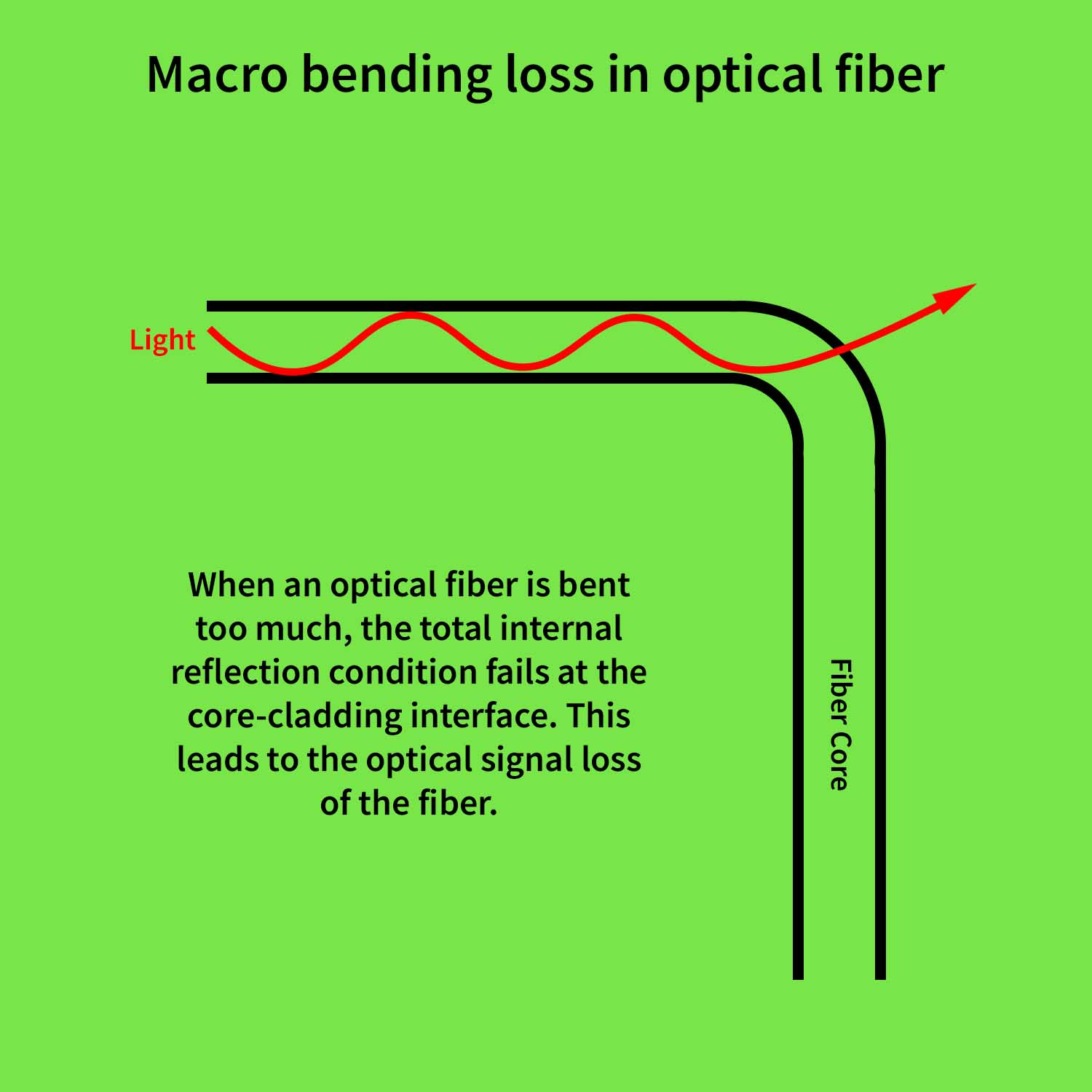Contents

Source: Fiberopticx
Bend Losses in Fiber Optics
Fiber optics is a critical technology in modern communications, but one of the challenges encountered is bend losses. These occur when optical fibers are bent, causing additional propagation losses as light transitions from core modes to cladding modes.
Understanding Bend Losses
Bend losses are a significant concern in waveguides, particularly in fiber optics. When fibers are bent beyond a certain critical radius, light can escape from the core into the cladding, resulting in losses. The critical radius varies depending on the fiber type; it is smaller for fibers with a high numerical aperture but larger for single-mode fibers with extensive mode areas.
Impact of Wavelength
Bend losses tend to increase with longer wavelengths due to interference effects at the cladding boundaries. This wavelength dependency can limit the effective range of single-mode fibers. For instance, a fiber with a cut-off wavelength of 800 nm might not perform well at 1500 nm due to excessive bend losses.
Microbends
Even without visible bends, microbends caused by manufacturing imperfections can lead to bend losses. These microscopic disturbances affect the fiber’s ability to guide light efficiently.
Mode Dependence in Multimode Fibers
In multimode fibers, bend losses are mode-dependent. Higher-order modes have a larger critical bend radius, allowing for the selective introduction of losses to higher-order modes without affecting the fundamental mode. This is beneficial in designing high-power fiber amplifiers and lasers.
Polarization Effects
Bend losses also vary with polarization, a property that can be leveraged to achieve stable single-polarization emission in fiber lasers.
Photonic Crystal Fibers
Photonic crystal fibers are known for their low bend losses, even beyond the single-mode cutoff wavelength. This makes them “endlessly single-mode,” maintaining single-mode properties over a broad wavelength range.
Estimating Bend Losses
The equivalent index method is a common approach to estimate bend losses. By calculating mode distributions for an effective index that includes path length modifications due to bending, this method provides a practical approximation.
Bend-Insensitive Fibers
In applications like optical fiber communications, bend-insensitive fibers are crucial. Standards like G.657 define these fibers, which are designed to tolerate tight bends, essential in environments like fiber-to-the-home (FTTH) installations.
Bend Losses in Photonic Integrated Circuits
Bend losses are also a concern in photonic integrated circuits, where compact designs necessitate tight waveguide bends. High numerical aperture waveguides, such as those based on silicon-on-insulator technology, are used to address these challenges.
Conclusion
Understanding and mitigating bend losses is essential for optimizing the performance of fiber optics in various applications. Advances in fiber design and estimation methods continue to enhance the capabilities of fiber optic technology.
This blog post provides a comprehensive overview of bend losses in fiber optics, addressing their causes, impact, and solutions. The text is structured with clear headings and sub-headings to enhance readability and understanding.

Source: Fiberopticx
Feel free to comment your thoughts.



